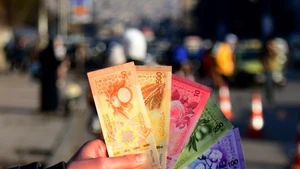The United Nations Economic Commission for Latin America and the Caribbean (ECLAC) has warned that extreme poverty could affect 82 million people in Latin America and the Caribbean this year, largely due to slow recovery from the COVID-19 pandemic and high inflation.
According to ECLAC statistics, the number of people falling into poverty and extreme poverty in this region increased from 12.9% in 2021 to 13.1% this year. Since the pandemic broke out in 2019, Latin America has recorded an additional 12 million cases of extreme poverty. ECLAC warns that Latin America is lagging 25 years behind in the fight against poverty.
ECLAC highlights the dire consequences the pandemic has had on the education sector in Latin America and the Caribbean, with schools in the region having closed for an average of 70 weeks, while schools elsewhere closed for an average of 41 weeks. The number of young people aged 18-24 who are uneducated or unemployed increased from 22.3% in 2019 to 28.7% in 2020.
ECLAC Executive Secretary Manuel Salazar-Xirinachs said the impact of the pandemic on extreme poverty cannot be reversed. He pointed out that a series of external shocks such as slowing economic growth, weak job market recovery, and rising inflation are besieging Latin America and the Caribbean, causing poverty to worsen. In October, ECLAC forecast regional growth in 2023 could reach 3.2%, but then lower it by nearly two thirds to just 1.2%.
The Organisation for Economic Co-operation and Development (OECD) also lowered its economic growth forecast for 2023 for most of the major economies in Latin America, and warned that countries in the region would lose growth momentum over the next two years due to tightening global financial conditions.
In its recently released Economic Outlook report, the OECD estimated Latin America's economic growth in 2023 at around 0.5% to 2.6%, down sharply from the average growth rate of 3.8% expected for this year.
OECD experts assessed that key economic sectors in Latin America will perform better than expected in 2022, especially the food and energy sectors, which have benefited from rising prices in the market. However, this growth momentum will weaken in 2023 and 2024 in the context that many governments are withdrawing financial aid and commodity prices on the world market are falling. The economies of Brazil, Mexico, Argentina and Colombia will grow below the world average in the coming years.
The OECD’s forecast for Chile is the most pessimistic, predicting that the South American nation's economy will fall into recession as soon as 2023, with negative growth of 0.5%.
According to the International Monetary Fund (IMF), economic activities in Latin America will decline from the end of this year to the end of 2023, mainly due to tight monetary and international financial policies. IMF experts have estimated that Latin America's GDP will grow by 3.5% this year and fall to 1.7% next year.
The IMF's forecast is similar to the World Bank's (WB) estimate, which predicts that the Latin American economy will grow by 3% in 2022 and fall to 1.6% in 2023. Latin American economies are significantly affected by the crisis in Ukraine as well as high international interest rates and the risk of a global recession. In addition to inflation, a sharp drop in raw material prices and social unrest are also risks for countries in this region.
Economic experts have called on countries in Latin America and the Caribbean to cooperate more closely and make repeated efforts to put the growth of the economy back on track, thereby reducing poverty and promoting social security.
















